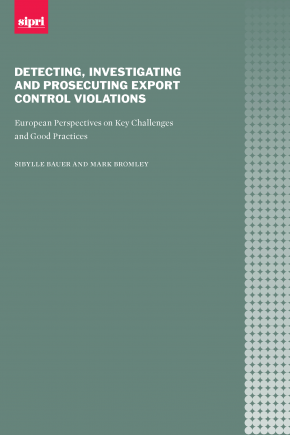Detecting, Investigating and Prosecuting Export Control Violations: European Perspectives on Key Challenges and Good Practices
The effective implementation of arms and dual-use export controls is reliant on the ability of states to detect, investigate and—when appropriate—prosecute any violations that take place. However, this aspect of export controls is also among the most challenging for states. This is even the case for European Union (EU) member states, many of which have only limited experience of investigating or prosecuting export control offences. Moreover, the challenges that states face in this area are becoming more complex, in particular because of the difficulties associated with implementing catch-all controls, the expansion of brokering activities, and the increased volume and importance of intangible technology transfers.
This SIPRI report highlights the broad and growing set of difficulties that EU member states need to overcome when seeking to detect, investigate and prosecute export control violations. In doing so, it details the range of approaches taken by states, outlines areas of good practice at the national level, and presents seven cases—and accompanying lessons learned—where export control violations have been detected, investigated and prosecuted. The report also includes a set of recommendations for steps that the EU could take to help to build national capacity and improve information sharing. However, given that many of the challenges and good practices identified are shared by all states, the report has wider relevance beyond the EU.
Funding for the report was provided by the US Department of State’s Export Control and Related Border Security (EXBS) Program.
1. Introduction
2. Differences between national systems in the EU
3. Challenges and good practices in detecting, investigating and prosecuting export control violations
4. Case studies and lessons learned
5. Recommendations for improvements at the EU level


